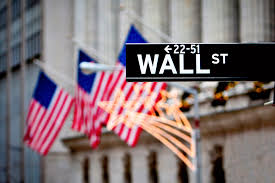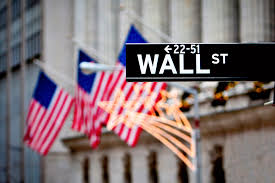
The U.S. equity strategists got one thing right about 2016: where the S&P 500 Index would end up, even though they didn’t exactly nail every detail.
In fact, comparing Bloomberg data going back to 2000, their accuracy in predicting the annual gain of 9.5 percent is unprecedented. as the benchmark gauge traveled 195 points in 12 months to close at 2,238.83, at 2,216 last December, the mean Wall Street prediction ended up being 1 percent too low.
It’s worth considering the market’s role in accommodating the feat, before anyone starts slapping high fives. What strategists always say they’ll do, stocks finally did in 2016. The average gain foreseen by forecasters surveyed by Bloomberg has been 9.3 percent since 2000.
So how did the 2016’s advance came closer to 9.3 percent compared to any year ever.
Those forecasts were roundly abandoned as soon as 2016 got going while the projections at the start of the year were borne out. Proving too much for Wall Street stock pickers to handle was the 11 percent rout that greeted investors in January and February. They’d lowered their estimated gain in the S&P 500 to 3.2 percent by midyear.
But heeding that pessimism would’ve been a mistake. rather than spell doom for equities, Donald Trump’s November win spurred the biggest rally for any newly elected president and Brexit’s fallout proved short lived, and thus the worst start in market history was quickly erased. Compared with $23.5 trillion a year ago, the value of American shares stands at $25.3 trillion today.
Strategist calls for next year are uncharacteristically dour. According to estimates from analysts who had made a projection by Dec. 19, the S&P 500 will climb 5.2 percent in 2017. But they make up for in homogeneity what they lack in bullishness. Narrowest in a decade is the top-to-bottom spread in forecasts for 2017.
According to analysts surveyed by Bloomberg, companies in the S&P 500 are poised to rise 12 percent next year after they managed to emerge from a five quarter-long earnings recession in 2016. After the price-earnings ratio of the S&P 500 climbed 11.6 percent to 20.96, the growth could help bring the market’s multiple back toward historical averages.
Investors in the second half turned to industries that do well when the economy is expanding, while the start of 2016 was marked by a rush to low-volatility funds and high-yielding defensive groups like utilities and consumer staples shares. In the end, most ended in the green.
Volatility in 2016, taken as a whole, resembled most other years in the bull market even with Brexit, Trump and the early-year correction. Noting the average since the rally began in 2009, the VIX averaged 15.8, down from both 16.7 in 2015 and 19.5.
With consumer discretionary and tech stocks leading the declines and declining 1.1 percent as a rally in real estate shares couldn’t make up for losses in 10 of 11 sectors, the S&P 500 finished the year with the third weekly loss in five.
(Source:www.bloomberg.com)
In fact, comparing Bloomberg data going back to 2000, their accuracy in predicting the annual gain of 9.5 percent is unprecedented. as the benchmark gauge traveled 195 points in 12 months to close at 2,238.83, at 2,216 last December, the mean Wall Street prediction ended up being 1 percent too low.
It’s worth considering the market’s role in accommodating the feat, before anyone starts slapping high fives. What strategists always say they’ll do, stocks finally did in 2016. The average gain foreseen by forecasters surveyed by Bloomberg has been 9.3 percent since 2000.
So how did the 2016’s advance came closer to 9.3 percent compared to any year ever.
Those forecasts were roundly abandoned as soon as 2016 got going while the projections at the start of the year were borne out. Proving too much for Wall Street stock pickers to handle was the 11 percent rout that greeted investors in January and February. They’d lowered their estimated gain in the S&P 500 to 3.2 percent by midyear.
But heeding that pessimism would’ve been a mistake. rather than spell doom for equities, Donald Trump’s November win spurred the biggest rally for any newly elected president and Brexit’s fallout proved short lived, and thus the worst start in market history was quickly erased. Compared with $23.5 trillion a year ago, the value of American shares stands at $25.3 trillion today.
Strategist calls for next year are uncharacteristically dour. According to estimates from analysts who had made a projection by Dec. 19, the S&P 500 will climb 5.2 percent in 2017. But they make up for in homogeneity what they lack in bullishness. Narrowest in a decade is the top-to-bottom spread in forecasts for 2017.
According to analysts surveyed by Bloomberg, companies in the S&P 500 are poised to rise 12 percent next year after they managed to emerge from a five quarter-long earnings recession in 2016. After the price-earnings ratio of the S&P 500 climbed 11.6 percent to 20.96, the growth could help bring the market’s multiple back toward historical averages.
Investors in the second half turned to industries that do well when the economy is expanding, while the start of 2016 was marked by a rush to low-volatility funds and high-yielding defensive groups like utilities and consumer staples shares. In the end, most ended in the green.
Volatility in 2016, taken as a whole, resembled most other years in the bull market even with Brexit, Trump and the early-year correction. Noting the average since the rally began in 2009, the VIX averaged 15.8, down from both 16.7 in 2015 and 19.5.
With consumer discretionary and tech stocks leading the declines and declining 1.1 percent as a rally in real estate shares couldn’t make up for losses in 10 of 11 sectors, the S&P 500 finished the year with the third weekly loss in five.
(Source:www.bloomberg.com)














